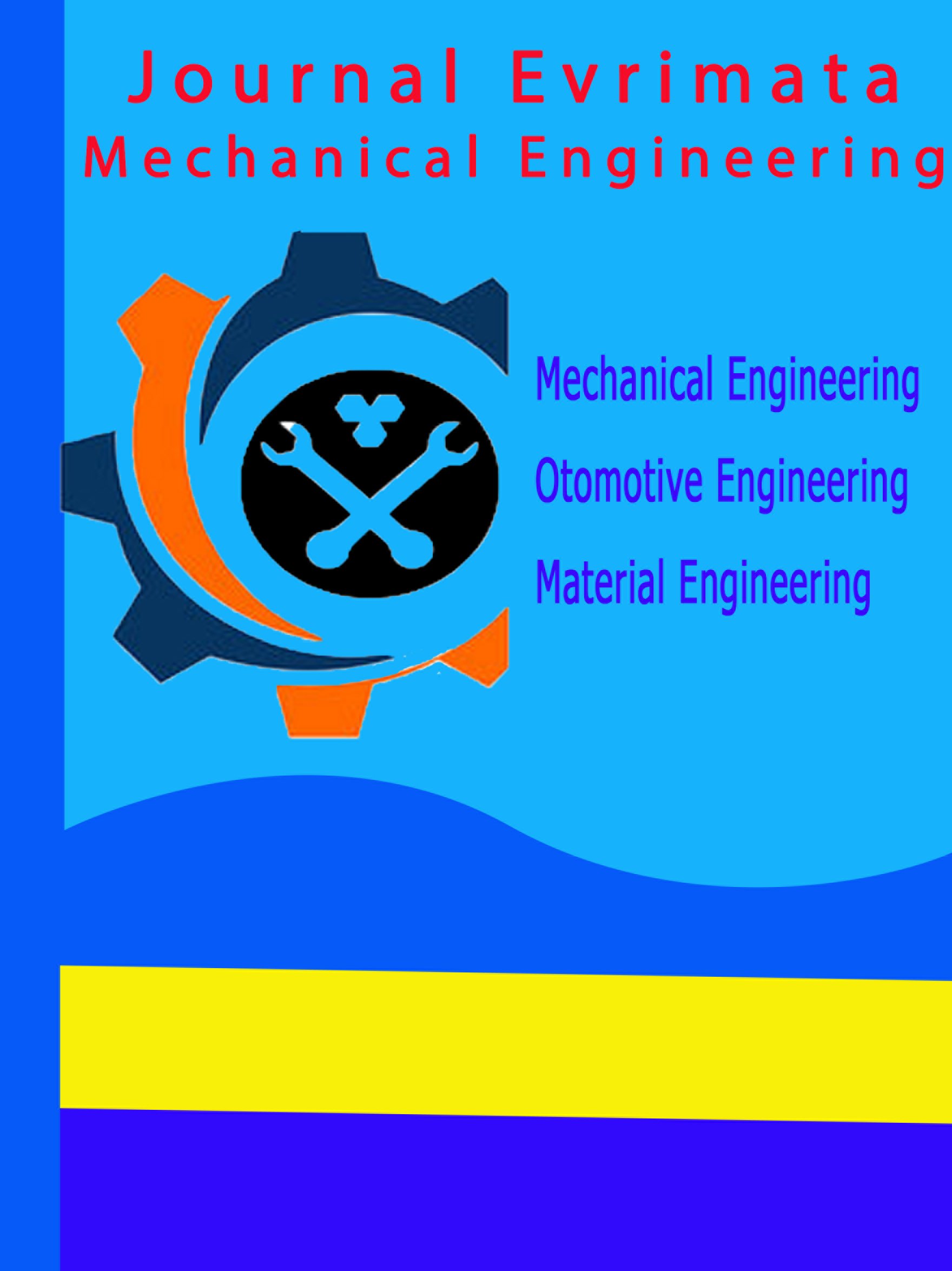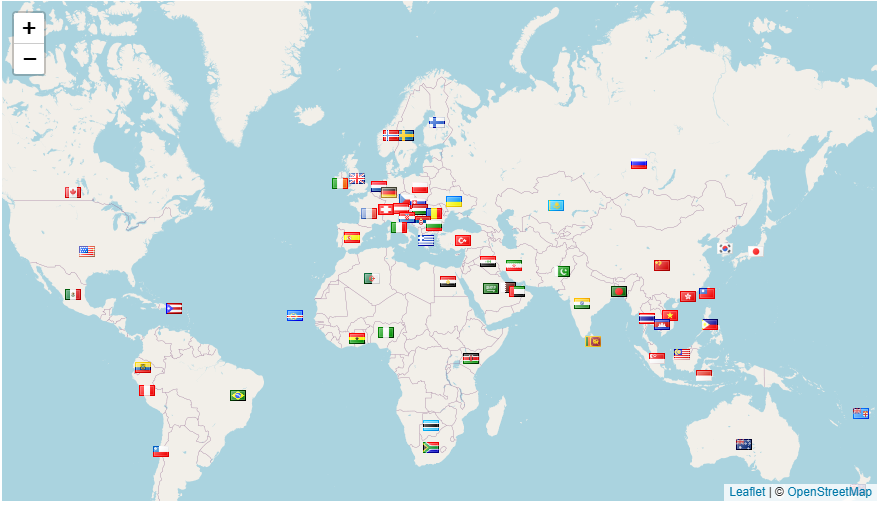The effect of changes in squish head angle on compression and torque ratio pressure on 160cc motorcycles
DOI:
https://doi.org/10.70822/evrmata.vi.80Keywords:
compression, squish head, torqueAbstract
This research is to direct the mixture of air and fuel exactly to the top of the midpoint of the dome in the cylinder head. In addition, Squish Head also determines the character of the motorcycle. Moreover, what is very prominent in the initial pull is that if the compression ratio is denser, the pull is lighter.This study aims to determine the effect of changes in the slope angle of the squish head of 15, 17 and 19 degrees on compression and torque. In this study, experimental research is used with a quantitative method, where information that can be calculated and measured is factual because it is in the form of numbers. Researchers to get the data will conduct tests using the dynotest tool.Changes in slope of the squish head have an effect on the torque. At an angle of 15 degrees, torque is produced at 9.91 N.m at 6000 RPM engine rotation. At an angle slope of 17 degrees, the torque increases by 0.14 N.m to 10.05 N.m at 6000 RPM engine rotation. At an angle of 19 degrees, the torque increases by 0.17 N.m to 10.22 N.m at 6000 rpm.
References
Z. Zhang, L. He, J. Ni, Z. Cui, J. Sun, and Z. Zhu, “Enhanced compression performance of an improved rectangular helical spring incorporated support feature,” Heliyon, vol. 10, no. 15, p. e35102, 2024, doi: 10.1016/j.heliyon.2024.e35102.
R. Sadiq Y and R. C. Iyer, “Experimental investigations on the influence of compression ratio and piston crown geometry on the performance of biogas fuelled small spark ignition engine,” Renew. Energy, vol. 146, pp. 997–1009, 2020, doi: 10.1016/j.renene.2019.06.140.
Z. Liu, P. Sun, Y. Du, X. Yu, W. Dong, and J. Zhou, “Improvement of combustion and emission by combined combustion of ethanol premix and gasoline direct injection in SI engine,” Fuel, vol. 292, no. December 2020, p. 120403, 2021, doi: 10.1016/j.fuel.2021.120403.
D. Ruan, H. Xie, K. Song, G. Zhang, and Q. Tong, “MAP Learning and Disturbance Observation based Engine Torque Control for Dynamometer Test Bench,” IFAC-PapersOnLine, vol. 51, no. 31, pp. 833–839, 2018, doi: 10.1016/j.ifacol.2018.10.117.
S. F. Furze, S. Barraclough, D. Liu, and S. Melendi-Espina, “Model based mapping of a novel prototype spark ignition opposed-piston engine,” Energy Convers. Manag., vol. 309, no. March, p. 118434, 2024, doi: 10.1016/j.enconman.2024.118434.
E. Tayyeban, M. Deymi-Dashtebayaz, and M. Farzaneh-Gord, “Multi-objective optimization for reciprocating expansion engine used in compressed air energy storage (CAES) systems,” Energy, vol. 288, no. December 2023, p. 129869, 2024, doi: 10.1016/j.energy.2023.129869.
C. Gong, J. Sun, and F. Liu, “Numerical research on combustion and emissions behaviors of a medium compression ratio direct-injection twin-spark plug synchronous ignition methanol engine under steady-state lean-burn conditions,” Energy, vol. 215, p. 119193, 2021, doi: 10.1016/j.energy.2020.119193.
Mokhtar, D. A. Sumarsono, A. A. Agama, A. Kurniawan, and H. Setiapraja, “Performance, Emissions, and Combustion Analysis of Gasoline-Ethanol-Methanol Blends in a Spark-Ignition Engine,” Results Eng., vol. 26, no. March, p. 105264, 2025, doi: 10.1016/j.rineng.2025.105264.
B. Deng, K. Hou, X. Duan, and Z. Xu, “The correlation between intake fluctuation and combustion CCV (cycle-to-cycle variations) on a high speed gasoline engine: A wide range operating condition study,” Fuel, vol. 304, no. December 2020, p. 121336, 2021, doi: 10.1016/j.fuel.2021.121336.
N. X. Khoa, Y. Kang, and O. Lim, “The effects of combustion duration on residual gas, effective release energy and engine power of motorcycle engine at full load,” Energy Procedia, vol. 158, pp. 1835–1841, 2019, doi: 10.1016/j.egypro.2019.01.429.
Z. Zhao et al., “An easily assembled boltless zinc–air battery configuration for power systems,” J. Power Sources, vol. 458, no. March, p. 228061, 2020, doi: 10.1016/j.jpowsour.2020.228061.
L. Wang, S. L. Zhu, X. R. Zhang, and H. yan Zhang, “Another way of cleaner public transportation: Four-stroke high torque CAE (Compressed Air Engine) performance analysis and CAE bus,” Energy Reports, vol. 8, pp. 5727–5738, 2022, doi: 10.1016/j.egyr.2022.04.024.
B. Wahono, A. Setiawan, and O. Lim, “Effect of the intake port flow direction on the stability and characteristics of the in-cylinder flow field of a small motorcycle engine,” Appl. Energy, vol. 288, no. April 2020, p. 116659, 2021, doi: 10.1016/j.apenergy.2021.116659.
M. Thor, I. Andersson, and T. McKelvey, Estimation of Diesel Engine Combustion Phasing from Crankshaft Torque Data, vol. 42, no. 26. IFAC, 2009. doi: 10.3182/20091130-3-fr-4008.00001.
J. S. M, E. G. Varuvel, and L. J. M. M, “Evaluating the potential performance of methane in lean conditions and examining the variations in combustion in a gasoline direct injection engine,” Energy, vol. 302, no. June, p. 131838, 2024, doi: 10.1016/j.energy.2024.131838.
R. Bathala, H. G, S. Rajkumar, D. A. S, and T. Jeyaseelan, “Experimental investigation, ANN modeling, and TOPSIS optimization of gasoline-alcohol blends for minimizing tailpipe emissions of a motorcycle,” Energy, vol. 293, no. February, p. 130698, 2024, doi: 10.1016/j.energy.2024.130698.
P. Wang, X. Duan, C. Chen, and S. Liu, “Experimental investigation on the exhaust emissions and performance of a hybrid electric motor coupled with an energy recovery system,” Case Stud. Therm. Eng., vol. 45, no. February, p. 102994, 2023, doi: 10.1016/j.csite.2023.102994.
K. Hou, B. Deng, Y. Chen, J. Ran, and J. Fu, “For cleaner exhaust of a high performance motorcycle: A macroscopic comparative study of catalytic converters under world-wide motorcycle test cycle,” J. Clean. Prod., vol. 284, p. 124730, 2021, doi: 10.1016/j.jclepro.2020.124730.
Ö. Can and Ö. Çetin, “Potential use of graphene oxide as an engine oil additive for energy savings in a diesel engine,” Eng. Sci. Technol. an Int. J., vol. 48, no. October, 2023, doi: 10.1016/j.jestch.2023.101567.
M. Pechout, P. Jindra, J. Hart, and M. Vojtisek-Lom, “Regulated and unregulated emissions and exhaust flow measurement of four in-use high performance motorcycles,” Atmos. Environ. X, vol. 14, no. April, p. 100170, 2022, doi: 10.1016/j.aeaoa.2022.100170.
H. Luo, M. Yu, C. Zhai, Y. An, C. Wang, and K. Nishida, “Study on fermentation gas combustion with hydrogen addition under various throttle openings,” Green Energy Resour., vol. 1, no. 1, p. 100003, 2023, doi: 10.1016/j.gerr.2022.100003.
G. Talib Hashem, M. F. Al-Dawody, and I. E. Sarris, “The characteristics of gasoline engines with the use of LPG: An experimental and numerical study,” Int. J. Thermofluids, vol. 18, no. March, p. 100316, 2023, doi: 10.1016/j.ijft.2023.100316.
J. Fu, B. Deng, X. Liu, J. Shu, Y. Xu, and J. Liu, “The experimental study on transient emissions and engine behaviors of a sporting motorcycle under World Motorcycle Test Cycle,” Energy, vol. 211, p. 118670, 2020, doi: 10.1016/j.energy.2020.118670.
M. Read, “A methodology for investigating the influence of hydrodynamic effects in gerotor type positive displacement machines,” Mech. Mach. Theory, vol. 204, no. September, p. 105836, 2024, doi: 10.1016/j.mechmachtheory.2024.105836.
B. Deng, Y. Chen, K. Hou, J. Fu, and R. Feng, “An experimental and numerical investigation on cycle-to-cycle variation of three different displacements single-cylinder motorcycle engines: The sequential analysis from intake to flame propagation process,” Fuel, vol. 275, no. March, p. 117945, 2020, doi: 10.1016/j.fuel.2020.117945.
B. Wahono, K. Jwa, and O. Lim, “A study on in-cylinder flow of small engine using steady-state flow benches,” Energy Procedia, vol. 158, pp. 1856–1862, 2019, doi: 10.1016/j.egypro.2019.01.432.
K. N. Duc and V. N. Duy, “Study on performance enhancement and emission reduction of used fuel-injected motorcycles using bi-fuel gasoline-LPG,” Energy Sustain. Dev., vol. 43, pp. 60–67, 2018, doi: 10.1016/j.esd.2017.12.005.






